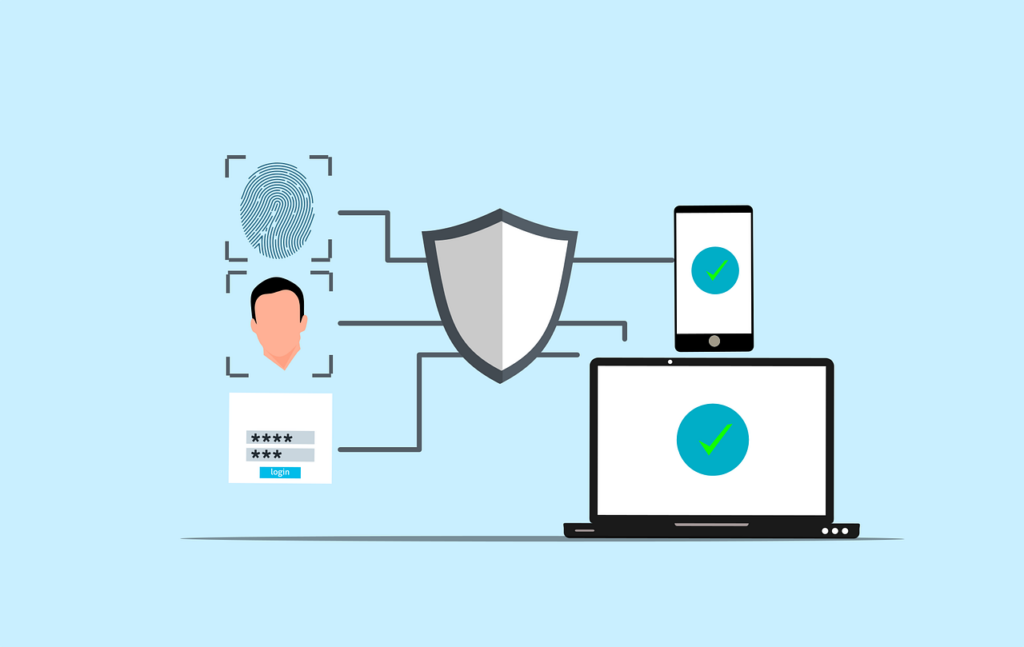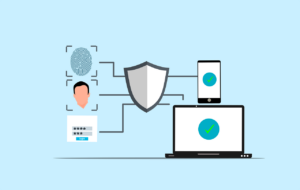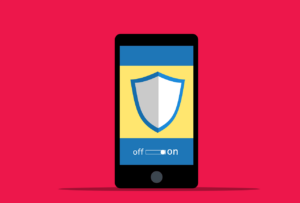Smart devices are everywhere now — from smart TVs and thermostats to baby monitors and security cameras. They make life easier, sure, but they also open the door to serious cyber risks.
In 2022, there were over 112 million IoT cyberattacks around the world. And with AI-powered threats growing fast, an 82% jump in attacks was expected in 2024. That’s why the U.S. government introduced a new way to help consumers pick secure tech — the Cyber Trust Mark.
You’ll start seeing this label on product boxes soon. Here’s what it means and how it helps you make safer choices when buying your next smart device.
What is the Cyber Trust Mark?
The Cyber Trust Mark is a new certification that tells you a smart device meets basic security standards. It’s designed to cut through the confusion and make it easier to identify which devices are safer to use — even if you’re not super techy.
Think of it like a nutrition label, but for cybersecurity. If a device has the mark, it’s passed specific safety tests. If it doesn’t, that doesn’t automatically mean it’s unsafe — but you’ll want to do more digging.
Why It Matters
Smart devices aren’t always as smart about security. In 2023, smart plugs, DVRs, and even smart TVs were among the most vulnerable. Hackers use them to steal data, spy, or even hijack your home network.
That’s where the Cyber Trust Mark comes in — giving you confidence that a device has the basics covered: strong passwords, good data protection, and regular updates.
If you’re running a smart home or office setup in Brisbane or Mackay, it’s worth knowing which devices are actually secure. That’s something we help clients manage through Managed IT and IT Support services every day.
How a Device Gets the Mark
To earn the Cyber Trust Mark, a device has to pass security testing in a few key areas:
- Password strength – no default “admin123” nonsense
- Data protection – encryption and secure handling of your info
- Software updates – automatic or regular updates to patch vulnerabilities
It’s not just a one-time thing, either. Standards will be updated as threats evolve, and some devices may need to be re-tested to keep the mark.
What This Means for Device Makers
Manufacturers have to apply to get the mark. Their devices are tested, and if they pass, they’re allowed to add the label to their packaging. It’s an extra cost for them, but it builds trust — and could be a major selling point for security-conscious buyers.
We expect to see more brands chasing this certification as awareness grows. In Managed Services, we’re already seeing businesses asking specifically for devices that meet these standards.
Where and When You’ll See the Mark
The rollout is starting now, and retailers are being encouraged to adopt it quickly. You’ll likely start seeing it on packaging for:
- Smart TVs
- Security cameras
- Smart locks
- Smart thermostats
- Smart speakers and displays
If you’re upgrading tech in your home or business, keep an eye out for that shield logo — it’s a shortcut to better security.
How It Helps You
The best part? You don’t need to be a tech expert. If the device has the Cyber Trust Mark, you already know it’s been through a solid security check.
And the knock-on effect is great too — companies now have a clear reason to take security more seriously if they want to stay competitive.
What If a Device Doesn’t Have It?
No Cyber Trust Mark? Don’t panic — but don’t assume the device is secure either. Do a bit of research:
- Check what security features it offers
- Look up reviews from trusted sources
- Ask the store about data protection and update policies
Where possible, stick with products that carry the mark. They’ve proven they meet today’s standards — and that’s worth something.
Already Have Smart Devices?
If you’ve already loaded up your home or office with smart gadgets, you don’t need to toss everything out. Just take a few basic steps to boost your existing security:
- Change any default passwords
- Keep your firmware/software up to date
- Disable features you’re not using
- Use a strong, unique Wi-Fi password
We help people in Brisbane and Mackay do exactly this — reviewing current setups and tightening security through our IT Support services.
What’s Next for Device Security?
The Cyber Trust Mark is just the beginning. We’ll likely see:
- Tougher standards over time
- More device types getting certified
- Smarter and faster ways to test for vulnerabilities
Right now, the mark only applies to the U.S., but similar programs could start appearing in other countries. It’s a step toward a safer digital future, where security is the standard — not an afterthought.
Stay Safe and Smart
The Cyber Trust Mark makes smart device shopping easier and safer. If you’re not sure what to look for, the mark does the heavy lifting for you.
But smart security still requires smart habits. Stay up to date, ask questions, and if you’re unsure about a device or setup, get help from someone who knows the ropes. Whether it’s for your home or your business, device safety doesn’t need to be complicated — not when you’ve got the right support.
—
Featured Image Credit




